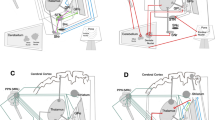Abstract.
Parkinson's disease is characterized by heterogeneity of clinical presentations, association of signs and symptoms, rate of progression, and response to therapy. The aim of this prospective 5-year study was to evaluate whether clinical features at onset were predictive of the subsequent progression. Two courses were identified which differed in the characteristics at onset. Slow course was characterized by earlier age at onset, lateralization of motor signs, rest tremor, and absence of gait disturbance. Rapid course presented older age, less evident lateralization of signs, predominance of bradykinesia-rigidity and gait disturbance. Our results confirmed that PD is clinically heterogeneous and specific patterns of onset seem to be associated with different rates of disease progression. Predictive models based on these clinical characteristics have a good sensitivity in indicating a slow disease progression but are not reliable in indicating a rapid evolution.
Similar content being viewed by others
Author information
Authors and Affiliations
Additional information
Correspondence to F. Bracco
Rights and permissions
About this article
Cite this article
Gasparoli, E., Delibori, D., Polesello, G. et al. Clinical predictors in Parkinson's disease. Neurol Sci 23 (Suppl 2), s77–s78 (2002). https://doi.org/10.1007/s100720200078
Issue Date:
DOI: https://doi.org/10.1007/s100720200078



